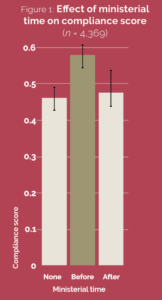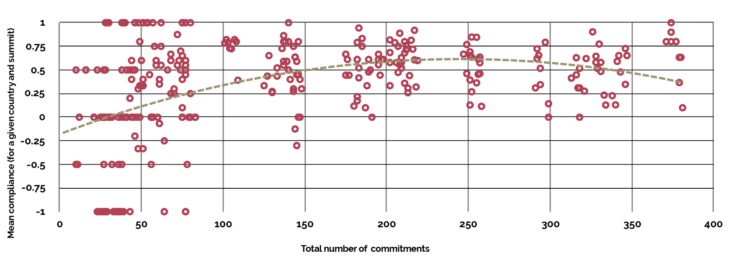Increasing the impact of the G7
Jessica Rapson, senior researcher, G7 Research Group, looks at the data behind G7 commitment success and highlights the measures that can increase the impact of the group on global policymaking
In times of global crisis, G7 members have come together to combine their considerable resources and better coordinate policy responses. The 5,525 collective commitments made at past G7 summits, as identified by the G7 Research Group, reflect this sensitivity to major world events. The G7’s response to the COVID-19 pandemic will likely result in numerous additional commitments to fund vaccination research, pass stimulus packages and bolster medical support. With an estimated success rate of only 76% compliance with past G7 commitments, efforts are needed now more than ever to ensure that these commitments are met. It is thus important to understand how commitment outcomes can be improved to better address the pressing global issues that the G7 seeks to resolve.
Using data from 4,369 unique commitment assessments produced between 1975 and 2017, the G7 Research Group has identified two key predictors associated with G7 commitment success, even when economic factors are adjusted for. Specifically, holding meetings with relevant ministers before G7 summits and producing a greater number of commitments at the summits are associated with higher compliance on commitments made.
Using each G7 member’s commitment outcomes for 537 individual commitments (n [sample size] = 4,369), 13 variables were assessed. They included features associated with gross domestic product, the total number of commitments made at the summit, the number of same-issue commitments made at the summit, whether a same-issue ministerial meeting was held that year, the binding level of the commitments, whether the commitment was related to trade, and whether the commitment mentioned a specific date, the United Nations or developing countries.
Ministerial meetings
On occasion, relevant ministers from G7 members meet to discuss the specifics of policy initiatives being proposed at G7 summits. It was found that commitment success was significantly higher for commitments that were made following a ministerial meeting on the same subject as the commitment. That is, on average and holding all other variables accounted for constant, commitments where a relevant ministerial meeting was held before the G7 summit had success rates 4.5% higher than those where no relevant ministerial meeting was held at all (see Figure 1). This is significant at the 1% level (p [probability] < 0.000).

Compliance outcomes when same-subject ministerial meetings were held after the summit were not found to be significantly different from when no such meetings were held.
Number of commitments
The total number of commitments made at G7 summits has varied from 10 made at the 1976 San Juan Summit to 355 at the 2015 Schloss Elmau Summit. The relationship between the total number of commitments produced at a given summit and the commitment outcomes for each G7 member with any specific commitment from that summit is convex (see Figure 2). On average and holding all other variables accounted for constant, as the number of overall commitments made increases, commitment success rates increase until a maximum success rate is reached at 130 commitments. After this point, additional commitments seem to provide diminishing returns for commitment success. This is significant at the 5% level (p = 0.034).

Recommendations
Holding meetings with relevant ministers before G7 summits and producing a greater number – up to 130 – of commitments at the summits are both associated with higher commitment success. This success may be because ministerial meetings help to enhance information sharing and policy coordination, while higher numbers of overall commitments draw attention to the importance of goal setting at G7 summits.
Caution must be taken with inferring a causal relationship between the effects of these two actions, as treatments were not randomly assigned. The low percentage of variance explained by the variables included in the model (approximately 7%) should also be noted.
Despite potential confounds and the seemingly low explanatory power of the model, the results provide some empirical evidence to suggest that holding meetings with relevant ministers before G7 summits and increasing the focus on commitment making may be effective for increasing commitment success, thus justifying their use as a tool to increase the efficacy of the G7.
Data and analysis for this article can be found at www.github.com/rapsoj/g7-compliance.












